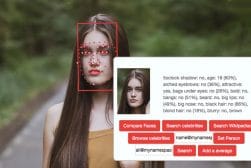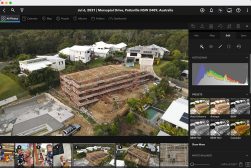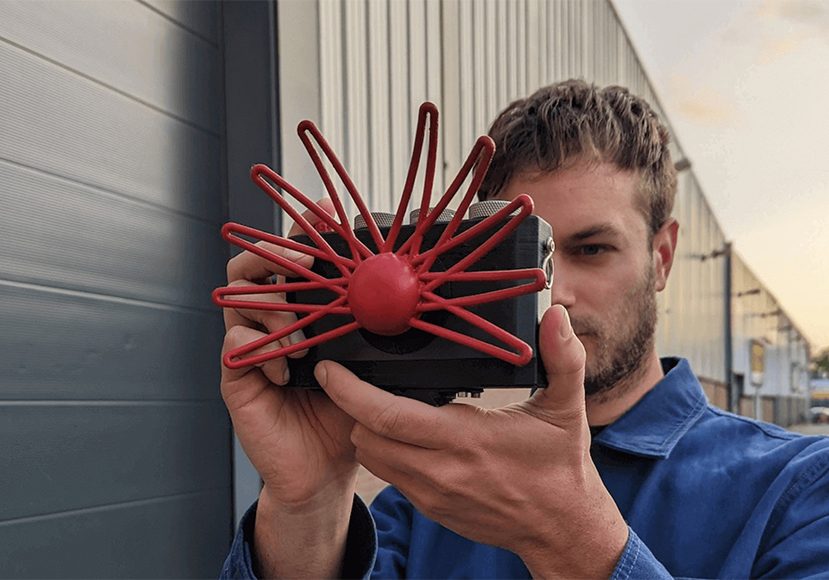
What’s an AI Camera? (Costs, Examples & Benefits)
We live in exciting times as photographers and nowhere is this more apparent than with the availability of AI Cameras. Let's take a look at what this means.
Camera Gear Guides | Camera Guides | By Stephan Jukic | Last Updated: February 1, 2024
AI cameras come in multiple forms and devices.
What they all have in common is their internal use of artificial intelligence technology and machine learning to enhance your ability to take high-quality photos.
The main benefit of these new kinds of cameras is that they let you obtain more precise, better-quality photographic results with less effort and expense.
We’re now going to break down the main benefits, features and technical details of AI cameras so that you can know what you’re dealing with the next time you see one being advertised.
We’ll also go into a few ethical and privacy warnings that you should keep in mind about these devices and their future uses.
What is an AI Camera?
So, what is AI camera exactly? An AI camera refers to a camera that incorporates artificial intelligence (AI) technologies to enhance its functionality and capabilities.
Instead of relying on user-configured settings, AI cameras use AI algorithms and computer vision techniques to analyze the visual data they capture in real-time and perform various “intelligent” adjustments while taking photos.
The advancement of AI technology continues to expand the possibilities, making AI cameras increasingly sophisticated and versatile.
Some of these advancements will mean wonderful things for certain types of users and photographers, but others could potentially create both ethical and practical problems in some contexts. We’ll go into these in more detail further down.
What are the benefits of AI camera systems?
AI cameras enhance photography by automating complex tasks and introducing new capabilities.
They can recognize and track objects, adjust settings based on the scene, and improve image quality through noise reduction and enhanced sharpness.
AI cameras also offer advanced features like portrait mode for professional-looking bokeh effects, and super-resolution for enhanced detail.
They can even simulate lighting conditions and apply artistic effects, making it easier to capture high-quality images.
These features make AI cameras a powerful and exciting tool for both professional photographers and casual users.
What are Some Examples of Current AI Cameras in 2024?
When it comes to AI cameras, there are some pretty cool options out there. Here’s a rundown of a few popular standalone recording devices that are making waves these days.
Remember that this list is far from comprehensive, and new models are appearing often as AI tech becomes more common in camera design.
Also, We haven’t bothered to list smartphone models here because there are too many to cover and most new smartphone releases, especially for mid-range and premium models, come packed with all kinds of at least nominally “AI-powered” processing technology.
- Nest Cam IQ: This bad boy from Google’s Nest brand is all about keeping your home safe. It’s got some serious AI chops, with face recognition that can distinguish between familiar faces and strangers. Plus, it can send you smart alerts if it detects any unusual activity around your place.
- Ring Stick Up Cam: Ring has been a big name in home security, and their Stick Up Cam is no exception. It’s got AI-powered motion detection, so it can tell the difference between a passing car and a potential intruder. You’ll get alerts on your phone when it spots something fishy.
- DJI Mavic 3 Pro: If you’re into aerial photography, the DJI Mavic 3 Pro is a beast. It’s equipped with AI-powered obstacle avoidance, so you don’t have to worry about accidentally crashing it into a tree or building. Plus, it’s got some sweet automated flight modes to capture epic shots.
- Paragraphica: a curious lensless camera (shown in the featured image of this article), also known as a context-to-image camera that uses location data and artificial intelligence to visualize a “photo” of a specific place and moment. The lensless camera exists both as a physical prototype and a virtual camera that you can try via the website.
- Alice Camera: built by creatives, Alice has an onboard AI computational chip besides the sensor. It uses a powerful neural network onboard technology.
Then of course there’s the world of mirrorless camera technology, which is also increasingly seeing AI-powered object detection, face recognition and other technologies appear in newer camera models. Some examples of this:
- Sony Alpha a7R V: Sony’s Alpha series is renowned for its high-quality mirrorless cameras, and the A7R V has been packed with some serious AI magic. It boasts AI-powered autofocus that can track subjects with remarkable precision, even in challenging lighting conditions. You’ll never miss a moment with this one.
- Nikon Z8: Nikon enthusiasts won’t be disappointed with the recently-released Z8. This mirrorless camera utilizes AI algorithms to optimize its autofocus performance, allowing for fast and precise subject tracking.
- Canon EOS R5: Canon’s flagship mirrorless camera, the EOS R5, combines impressive image quality with AI capabilities. It features AI-based subject recognition, which helps it identify and track people, animals, and even birds. Plus, its advanced autofocus system takes advantage of deep learning technology for superb performance.
- Fujifilm X-T4: Fujifilm’s X-T4 brings together the charm of this brand’s famously retro-styled cameras with modern AI enhancements. It employs intelligent autofocus algorithms that can detect and track subjects with remarkable accuracy. This camera also incorporates face and eye detection technology to ensure sharp portraits every time.
- Panasonic Lumix GH5: The Lumix GH5 from Panasonic is a favorite among videographers, and it incorporates AI features to take your video recording to the next level. With AI-based object recognition, it can track moving subjects seamlessly, ensuring smooth footage.
- Sony ZV-E1: The latest Sony full-frame mirrorless camera for vloggers is equipped with an AI processing unit for framing stabilization, subject recognition and more.
These are just a handful of examples, but the world of AI cameras is pretty much spreading everywhere. So keep your eyes peeled for these features in any new camera releases you see.
What’s the Difference Between an AI Camera and a Traditional Camera?
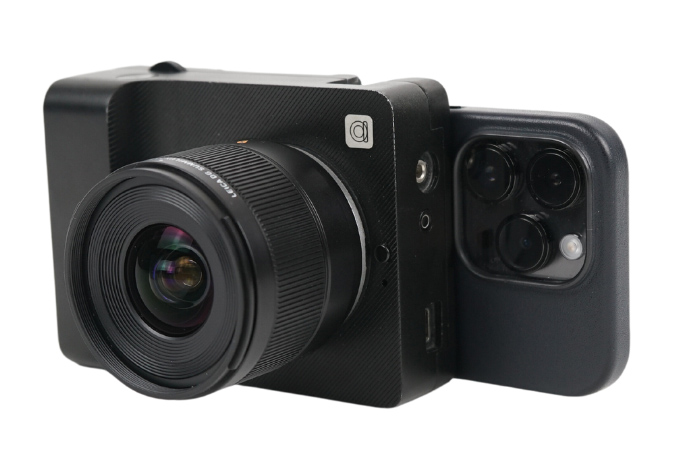
Alice Camera – an AI-accelerated computational camera (AI camera) built by Photogram AI.
The main differences between an AI camera and a normal camera lie in their differing capabilities and in how much of their functionality can autonomously deliver certain photographic or video recording results.
Superficially, both kinds of devices might look totally identical, but under the hood, the AI model will be running all sorts of new features that, at least ideally, improve its ability to let you capture better photos and videos.
While a normal camera captures images or videos based on your own predefined settings and experience, an AI camera full form does a lot of this automatically based on its own analysis, and this is a vital distinction for all of these devices.
AI cams basically incorporate artificial intelligence technologies to analyze the visual data they capture in real-time and perform intelligent adjustments.
It’s important to note that the term “AI camera” can encompass a broad range of cameras with varying levels of AI integration. In some cases, it can also mean lots of hype with little substance for certain models.
For example, your average smartphone camera won’t have nearly the same AI object recognition features as a brand new Sony A7R V with its powerful new AI AF technology.
Overall though, many AI cameras genuinely do deliver more advanced AI capabilities and really offer incredible performance enhancements. Of course, they can also be much pricier, but not always.
How Much Do AI Cameras Cost?
The cost of AI cameras can vary enormously depending on things like brand, features, specifications, and intended application. AI camera price can also vary based on brand hype (hello, Apple!)
However, any AI camera worth its salt will include advanced technologies like computer vision, deep learning, and image processing algorithms to perform intelligent functions for object recognition, AF, facial recognition, and video analytics.
At the lower end of the price range, really basic AI cameras can be found for around $100 to $300. These cameras usually offer limited AI capabilities and may be designed for specific applications such as home security or monitoring.
Mid-range AI cameras with more advanced features and better image quality typically range from $500 upwards. These devices may offer higher resolution, improved night vision, motion tracking, and other AI-powered functionalities.
Some high-end home security cameras with AI object and facial recognition features can cost anywhere from a few hundred dollars to over $1000.
For professional-grade AI cameras, the prices you might pay can start from $500 and go up to several thousand dollars or more.
These cameras are often used in commercial settings, public surveillance, industrial applications, or for specialized purposes where more advanced features and robust performance are crucial.
| Camera | Price |
|---|---|
| Ring Stick Up Cam | $149.99 |
| Nest Cam | $199.99 |
| DJI Mavic 3 Pro | $2,199.00 |
| Sony Alpha a7R V | $3,499.99 |
| Canon EOS R5 | $3,399.00 |
| Fujifilm X-T4 | $1,392.00 |
| Sony zv-e1 | $2198.99 |
| Nikon Z7 | $2,596.95 |
| Nikon Z8 | $3,999.95 |
| Sony AV IV | $3,898.00 |
You should remember that the prices mentioned above can be really fluid. They’ll also tend downwards over time as ever more advanced features become more common in more affordable or even downright cheap cameras.
What are Some Current AI Camera Features?
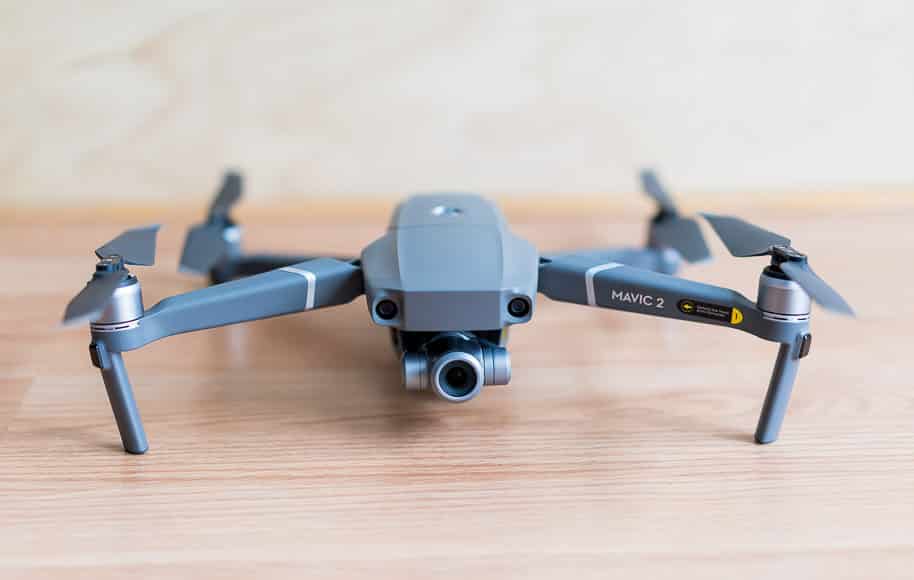
The Spot-Check system on the Mavic Pro 3 uses Artificial Intelligence (AI) to scan and identify potential obstacles in the drone’s path | Marc Bergreen
With AI cameras, a whole pile of new artificial intelligence features and benefits enter the picture that can take your photography to new levels even if you’re a complete amateur, or working in difficult conditions.
Some might consider these benefits and technologies to be a form of photographic cheating, but that’s a debate for another day.
The bottom line is that many mid-range to high-end cameras with AI technology inside them let you achieve impressive results thanks to features such as the ones below:
Scene Recognition
AI cameras can analyze the scene being captured and automatically adjust camera settings such as exposure, focus, and white balance to optimize image quality based on the detected environment.
Face Detection and Recognition
AI-powered cameras can detect human faces within the frame and identify specific individuals by matching them against a database of known faces.
This feature is often used for security purposes, as well as for features like facial unlocking on smartphones.
Object Detection
AI cameras can identify and track various objects within the frame, such as vehicles, animals, or specific items.
This capability can be used for applications like augmented reality, automated surveillance, or object-specific image enhancements.
Image Stabilization
AI algorithms can analyze camera motion and compensate for any unintentional movements, resulting in sharper and less blurry images or videos.
This feature is particularly useful for low-light conditions or when capturing footage while moving.
Automatic Focus and Tracking
AI cameras can automatically identify and track moving subjects within the frame, ensuring they remain in focus and centered, even as they move around the scene.
This feature is often found in sports photography or capturing fast-paced events.
Computational Photography
Computational photography refers to digital techniques that enhance or extend the capabilities of digital photography, using software to enhance or alter images in ways that traditional optical photography cannot.
It includes features like HDR, night mode, and depth effect, which use complex algorithms to create images that are closer to what the human eye sees or even beyond.
Smart HDR
High Dynamic Range (HDR) imaging techniques, enhanced by AI algorithms, enable cameras to capture a wider range of tones and details in both bright and dark areas of an image.
This results in more balanced and vibrant photographs, particularly in challenging lighting conditions.
Portrait Mode
AI-powered cameras can simulate a shallow depth of field, blurring the background while keeping the main subject in sharp focus.
This creates a professional-looking bokeh effect commonly associated with DSLR cameras.
Super Resolution
AI cameras can employ advanced algorithms to enhance the resolution and level of detail in images or videos.
This is particularly useful when zooming in or capturing images in low-resolution settings.
Video Recording
When it comes to video recording, many of the AI features that these kinds of cameras apply to photos also work behind the scenes.
For example, resolution enhancements, HDR improvement, image stabilization and object tracking are all features that many AI cameras apply to the video they capture just as much as they do to photos.
Image Synthesis
In the context of AI cameras, AI image synthesis could potentially be used to enhance photos or even generate parts of photos.
For example, an AI camera could use image synthesis to fill in missing parts of a photo, enhance the quality of a photo taken in low light, or generate a background for a photo.
How is AI used in SmartPhone Cameras?
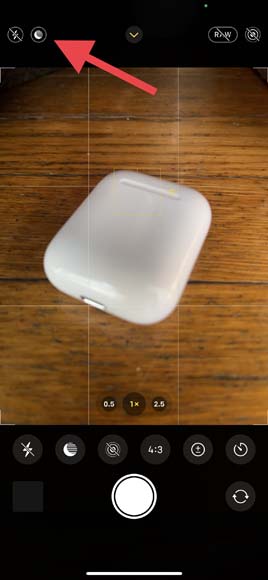
Night Mode is an AI camera feature on the latest iPhones | Ash Darrow
Artificial Intelligence has become a crucial component in modern iOS and Android mobile phone cameras, enhancing their capabilities and making it easier to take better pictures with their notoriously tiny lenses and sensors.
AI algorithms are used for scene recognition, where the camera identifies the subject – be it a landscape, a person, or a plate of food – and automatically adjusts settings like exposure, focus, and color balance to capture the best possible image.
Face detection and recognition are also AI-driven features, used in the latest iPhones and Android devices for both photo enhancement and security applications like facial unlocking.
Object detection allows the camera to identify and track objects within the frame, useful for features like autofocus and augmented reality applications.
AI also powers image stabilization, compensating for camera shake to produce sharper images and smoother videos – the latest iPhone 14 is a good example of this technology in action.
High Dynamic Range (HDR) techniques, bolstered by AI, enable the capture of more detail in both bright and dark areas of an image.
AI is also behind the popular Portrait Mode, which simulates a shallow depth of field for a professional-looking bokeh effect. The same is true with Night Mode in iOS, which enhances low-light photography much like increasing the ISO.
Then there are the super-resolution algorithms that use AI to enhance image resolution and detail, particularly useful in digital zoom and low-resolution settings.
What are Smart Cameras?
Smart cameras, also known as connected cameras or AI cameras, are digital cameras that are equipped with advanced features and capabilities beyond traditional digital photography.
They often have built-in internet connectivity, allowing them to share photos directly to social media or cloud storage, or even live stream video.
In addition to connectivity, smart cameras often incorporate artificial intelligence (AI) technologies to enhance their functionality.
This can include features like automatic scene recognition, where the camera can identify the type of scene being photographed and adjust its settings accordingly; facial recognition, where the camera can identify individuals in a photo; and object tracking, where the camera can follow a moving object and keep it in focus.
Some smart cameras also have the ability to run apps, much like a smartphone, which can provide additional features and capabilities.
For example, a smart camera might have an app that allows it to function as a security camera, sending an alert if it detects motion.
What are the Best AI Camera Apps?
The following is a sampling of useful and popular AI Camera apps.
- Google Camera (GCam)
- Adobe Photoshop Camera
- Lensa
- Picai
- Blurize
- AI Camera
- NeuralCam
- Camera 51
- Spectre Camera
- Focos
- Halide
What are some Future Developments in AI Cameras?
AI camera technology is advancing very quickly and it can almost seem bewildering if you’re trying to keep up. The same applies for AI tech in general so you shouldn’t feel bad for feeling like you’re at least a bit behind the curve.
For a basic rundown of what’s right on the horizon or already being refined further, here’s a breakdown of upcoming developments:
Enhanced Real-Time Object Recognition
AI cameras are already pretty good at identifying objects, but we can expect even greater accuracy and speed in the future. Imagine your camera instantly recognizing specific objects, like different breeds of dogs or specific brands of products.
It could be a game-changer for security, shopping, and even photography.
Advanced Scene Understanding
Future AI cameras may become even smarter at understanding the scene they’re capturing.
They could analyze the environment, recognize different elements like landscapes or cityscapes, and adjust settings accordingly to capture the perfect shot or video. It’s like having an intelligent photography assistant right in your camera.
Improved Low-Light Performance
Low-light photography has always been a challenge, but AI cameras are making great strides in this area.
We can expect even more impressive low-light performance in the future, thanks to AI algorithms that optimize image processing, reduce noise, and enhance details in challenging lighting conditions.
Gesture and Voice Control
Imagine controlling your camera with just a wave of your hand or a voice command.
Future AI cameras could incorporate advanced gesture and voice recognition, allowing for hands-free operation and intuitive control.
It would make capturing moments even more convenient and natural.
Personalized User Experience
AI cameras of the future might learn your preferences, shooting style, and editing preferences over time.
They could adapt to your unique style, automatically suggesting optimal camera settings, filters, or editing techniques based on your past choices. It’s like having a camera that understands your creative vision and helps you bring it to life.
Seamless Integration with Other Devices
With the rise of smart homes and interconnected devices, future AI cameras could seamlessly integrate with other gadgets and systems.
Picture your camera collaborating with smart speakers, smartphones, or even your home security system to provide enhanced functionality and convenience.
Advanced Machine Learning
Machine learning, a subset of artificial intelligence, is integral to future developments in AI cameras. It enables cameras to learn from data, improving image recognition, enhancing image quality, and personalizing user experience.
Future AI cameras may have advanced capabilities like generating 3D models from 2D images, creating virtual backgrounds, or automatically editing photos based on user preferences.
Additionally, they could integrate with other AI systems, such as voice assistants or smart home devices, offering new ways to interact with and control the camera.
Privacy and Ethical Considerations of AI Camera Use
The use of AI cameras raises a whole hornet’s nest of privacy and ethical concerns. Some of these apply particularly to your own personal use of these cameras in public spaces, but others might have enormous long-term societal ramifications.
One of the primary concerns is the potential for surveillance and the misuse of facial recognition technology.
AI cameras can identify individuals in public spaces, which could lead to unwarranted tracking or profiling.
This technology can be exploited by authoritarian regimes, unscrupulous businesses, or even individuals with malicious intent.
In addition, AI cameras in smartphones or home security systems could potentially be hacked, leading to unauthorized access to personal images and videos.
Data privacy is another significant issue. Images captured by AI cameras often need to be processed in the cloud, which means they leave the user’s device and are stored on a server.
This raises questions about how this data is stored, who has access to it, and how it is used.
There are also concerns about consent. People may be photographed without their knowledge or agreement, and these images may be used in ways they did not anticipate or desire.
Finally, there is the issue of bias in AI algorithms.
If the algorithms used in AI cameras are trained on datasets that are not diverse, they may perform poorly for certain groups of people, leading to unfair outcomes.
These are all important considerations that need to be addressed as the use of AI in cameras continues to grow.
Final Thoughts on Artificial Intelligence Camera Technology
On a more basic level, your own use as a photographer of digitally connected AI cameras in public might come with legal ramifications that can smack you right in the face if you’re using your camera in the wrong context and place.
This might happen because people become increasingly wary of having their picture taken with ever “smarter” cameras that include biometric capabilities, or it might be because of stringent new privacy laws against public photography.
These sorts of details are still being hammered out by regulators, social pressures and other factors that might be hard to predict until they emerge.
What do you think about the use of AI cameras in general? Let us know in the comments.





